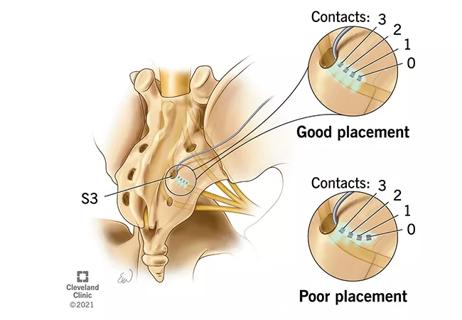Advertisement
Technology, big data, advances in prostate cancer

Advertisement
Cleveland Clinic is a non-profit academic medical center. Advertising on our site helps support our mission. We do not endorse non-Cleveland Clinic products or services. Policy
The 2018 American Urological Association (AUA) annual meeting in San Francisco offered a comprehensive program that covered wide-ranging current topics in urology — from kidney stones to prostate cancer research specific to the gay, bisexual and transgender population. Here is my take on subject matter with potential for the greatest impact in our specialty this year:
A clear theme at this year’s meeting was technology in urology. AUA president J. Brantley Thrasher, MD, highlighted this during his Presidential Address. He spoke about the urologic community’s history of embracing technology and incorporating it into our practices in order to improve patient care. From shockwave lithotripsy, to lasers, to robotics, urologists have always been early adopters of new technology. Dr. Thrasher painted a bright future for technology in urology with ongoing advances in machine learning, automation and robotics.
The areas most impacted by technological advances include diagnosis and treatment planning, and quality improvement. Presentations discussed how machine learning can be applied to the histopathologic diagnosis of prostate cancer, as well as to the interpretation of medical imaging (e.g., MRI in the detection of prostate cancer). In support of this, the AUA has several initiatives aimed at promoting the development of technology in urology.
Another theme at this year’s AUA meeting was the use of “big data.” Biomedical data have grown exponentially in recent years, and the challenge facing academia is translating these data points into new understanding of disease, diagnostics and therapeutics. Atul Butte, MD, PhD, discussed this topic at the annual Ramon Guiteras Lecture. These data are often publicly available, and the challenge is to teach those in the urologic community how to utilize them in order to advance science in the field. One cited example is the use of data contained within patient electronic medical records to predict death and disease on an individual patient level.
Advertisement
As in prior years, prostate cancer was a major theme of the meeting. Presenters discussed important recent developments in prevention, screening, diagnosis and treatment.
Updated data from the Prostate Cancer Prevention Trial (PCPT) were presented. The original publication in the New England Journal of Medicine (NEJM) in 2003 demonstrated that finasteride (a 5-alpha reductase inhibitor) given to men reduced the risk of prostate cancer by nearly 25 percent compared with placebo. However, at the time, concerns arose due to the observed increased risk of high-grade disease. Subsequent work suggested that the higher risk was likely due to improved detection of disease already present in the patient, rather than the de novo induction of high risk disease. A follow-up publication in the NEJM in 2013 further reassured the urologic community; showing that finasteride had no observed impact on long-term overall survival.
During the Saturday morning plenary session, Ian M. Thompson Jr, MD, presented new data on the effect of finasteride on prostate cancer mortality in these patients. By linking patient identifiers from PCPT to cause of death data in the National Death Index (NDI), they found a 25 percent reduction in prostate cancer death with finasteride use. Thus, not only does finasteride reduce the detection of prostate cancer and the associated patient anxiety and treatment morbidity, but it also reduces the risk of dying of prostate cancer. Dr. Thompson concluded by stating the importance of prevention trials, and their large impact when they lead to changes in care on a population level.
With respect to prostate cancer screening, the recent reversal of US Preventative Services Task Force (USPSTF) recommendations was an important event in the field. Final recommendations favor screening of men ages 55 to 69, recognizing the observed benefit of screening in the European Screening Trial, and advocate for shared decision-making between patient and provider.
Advertisement
A number of abstracts presented at the AUA meeting this year continued to explore ways to improve the sensitivity and specificity of prostate cancer screening through the development of novel protein and genetic biomarkers.
In the diagnosis of prostate cancer, MRI continues to play an expanding role. Published in the NEJM this month, results of the PRECISION trial demonstrate the utility of MRI prior to prostate biopsy. The multicenter, randomized trial assigned patients with a clinical suspicion of prostate cancer to undergo MRI, with or without targeted biopsy, or standard transrectal ultrasound-guided biopsy. Data from 500 randomized men showed that MRI-targeted biopsy led to a 12 percent increase in the detection of clinically significant prostate cancer, and a 13 percent decrease in the detection of clinically insignificant prostate cancer. The results of this trial will likely change urologists’ approach to men referred for elevated PSA or abnormal digital rectal examination. The use of MRI to triage patients prior to biopsy may soon become the new standard, particularly in practices with access to the required radiological equipment and expertise.
Finally, advances continue to be made in the management of prostate cancer. In the urologic community, there is increasing agreement on the management of low-risk prostate cancer with active surveillance, and high-risk prostate cancer with radical therapy. However, uncertainty remains for the treatment of low-volume, intermediate-risk prostate cancer. In a plenary session moderated by Laurence Klotz, MD, speakers debated the ideal treatment strategy in this group of patients.
Interestingly, 13 different treatments were considered, highlighting the lack of high quality comparative effectiveness data in the treatment of this malignancy. These treatment options included four different modalities used for focal gland ablation: cryoablation, high-frequency ultrasound (HIFU), electroporation, and focal laser and vascular intervention. Only the latter was supported by level 1 evidence, which was presented as a late-breaking abstract by Inderbir Gill, MD, in a plenary session. The results of this randomized, multicenter trial revealed a significantly lower proportion of men with low-risk prostate cancer requiring definitive radical therapy in the focal treatment group when compared to active surveillance (24 percent vs. 53 percent at four years). With little observed effect on urinary and sexual function, this option may be offered to men with low-risk prostate cancer wanting to minimize the risk of overtreatment.
In summary, the 2018 AUA annual meeting painted a bright future for the field of urology. Advances in technology and improvements in care suggest that we are continuing to shift the risk-benefit ratio in favor of the patient.
Dr. Abouassaly is Associate Professor of Urology, Glickman Urological & Kidney Institute
Advertisement
Advertisement

Up to 3 days faster than waiting for urine culture results

Review the advantages and disadvantages of newer interventions

Pioneering and refining the approach in pyeloplasty, nephrectomy and more

Unlike earlier pills, new drugs do not cause liver toxicity

Male factors play a role in about half of all infertility cases, yet men often are not evaluated

Hadley Wood, MD, shares her vision as the new editor-in-chief of Urology

Study leverages data from the ROSETTA trial

More on the procedure and the institutional experience